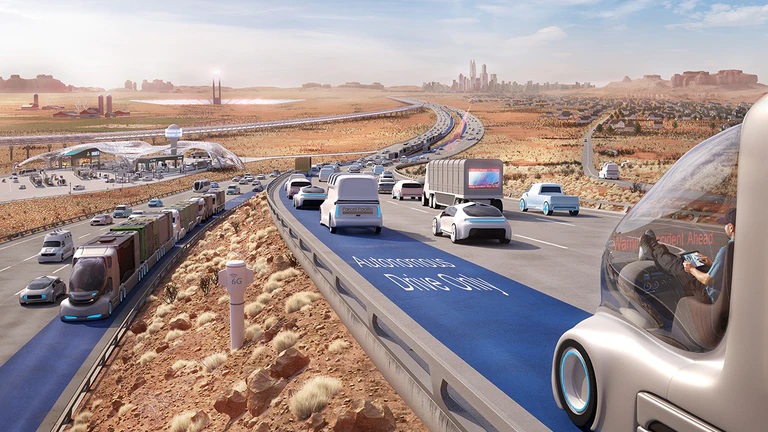Trucking’s ZE future is near — but not that close. Penske’s Paul Rosa recently detailed some of the challenges and opportunities ahead during the historic trucking industry transformation that is just getting started.
With more battery-electric and other zero-emission (ZE) commercial vehicles getting closer to the mainstream, there is a buzz among fleets about converting their diesel-guzzling trucks into alternative-powered vehicles of the future. But a lot still has to happen before the trucking industry transforms into a zero-emissions future.
This historic transformation of the trucking industry is getting closer, but it’s not here yet.
“I wish it would be faster because customers are very excited about this, but I don’t really know that we’re going to see it happen as fast as we want it to,” Paul Rosa, senior vice president of procurement and fleet planning for Penske Truck Leasing, said March 9 during a speech at NTEA’s 2021 Work Truck Show, which is being held virtually.
There are about 4.5 million Class 4 through Class 8 vehicles on U.S. roads today. Each year, truckmakers build about 600,000 new Class 4 through Class 8 vehicles for all the various commercial and government applications.
“Let’s say that the OEMs were ready to build only zero-emission trucks and the technology would support your operation,” Rosa said. “So the only trucks that are going to be built are zero emission. If we use that same 4.5 million [trucks on the road today] as the bar, and you use the 600,000, which is the max or average that could be built in a calendar year, it would take us eight to nine years to turn over the entire commercial fleet to be zero emission.”
A slower, more realistic adoption rate would start with a focus on building ZE vehicles for transit and school buses, refuse applications, and final-mile fleets, Rosa said. That would lead to about 13% of Class 4-8 vehicles on the road being ZEs by 2035. Even if a more aggressive approach was taken, Rosa said, Penske doesn’t anticipate more than a 38% conversion by 2035.
“It’s going to take a while,” he said. “We tell customers, ‘You need to be ready, but you need to be patient.’ I see this as a longer adoption rate, and that is what Penske is planning for.”
While the quick conversion of fleets from liquid fuel to electric charging is not going to be fast, it has to start somewhere. Rosa said that Penske, which ranks No. 3 on the 2021 FleetOwner 500 For-Hire list, is urging its customers to begin preparing for this transformation with a plan. “The question is when you pull that plan off the shelf,” Rosa added. “But if you have your plan and you’re ready to implement it, you’re ahead of the game.”
He broke the ideal fleet conversion plan into three strategies: vehicles, facilities, and charging. “You need all three of those to be answered,” he said. “You need to find a really good source. You need to educate yourself and constantly stay informed on what’s happening because things are changing often. There could be enhancements or improvements that could accelerate your plan forward.”
If he had a crystal ball that showed what the next few years would look like, Rosa said he sees an “array of challenges” ahead as the industry shifts to its alternative-powered future based on the knowledge Penske has gathered in the EV space. But along with challenges will come opportunities. He detailed 10 things he expects to happen in the coming years as the trucking industry moves to adopt ZE strategies.
Click Start Slideshow below to see what challenges and opportunities Rosa and Penske expect to happen in the commercial trucking zero-emission space in the coming years.
By Josh Fisher
Source: https://www.fleetmaintenance.com
CUT COTS OF THE FLEET WITH OUR AUDIT PROGRAM
 The audit is a key tool to know the overall status and provide the analysis, the assessment, the advice, the suggestions and the actions to take in order to cut costs and increase the efficiency and efficacy of the fleet. We propose the following fleet management audit.
The audit is a key tool to know the overall status and provide the analysis, the assessment, the advice, the suggestions and the actions to take in order to cut costs and increase the efficiency and efficacy of the fleet. We propose the following fleet management audit.



